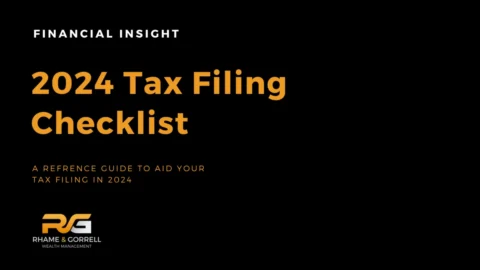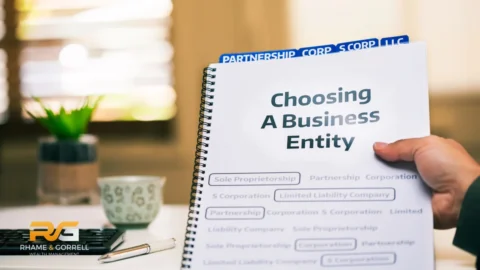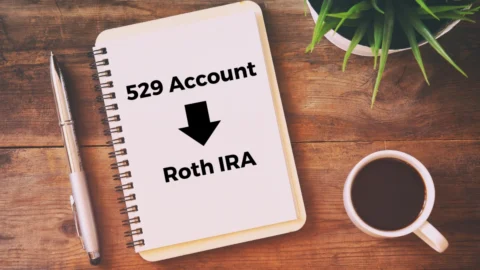Emergency Fund Basics
How to best Prepare For Unexpected Events
In life, nothing is certain. That’s why one of the first basics of a financial plan is having an adequate Emergency Fund. However, emergency funds come in all shapes and sizes and can be accomplished through a variety of methods. We’ll explore some of the most common elements of emergency funds below as well as some creative planning strategies we’ve employed to assist clients in feeling financially ready for anything.
Emergency Fund 101
An emergency fund is really nothing more than a pool of funds you have access to in an emergency. This can be a one-time event such as an unexpected medical bill, or a longer timeframe event like a 6-month period of unemployment. Most financial experts agree that you should have access to a minimum of 6 months’ worth of Non-Discretionary Expenses – this means any expense you can’t cut out of the budget like rent/mortgage, utilities, food, etc. must be accounted for.
Some risk-adverse individuals may wish to keep an even larger emergency fund on hand, but we generally agree that somewhere between a 6-12 month expense buffer is perfectly adequate for most individuals.
What’s in an Emergency Fund?
Some people believe that your emergency fund must be sitting in your bank, ready to be spent at a moment’s notice. However, life very rarely works that way! Bills take time to be sent via mail, so in reality individuals have some time after a major expense to move funds around to cover the cost.
It’s also common to see individuals losing out on significant potential income by employing a cash-only emergency fund strategy rather than considering higher interest-bearing options. Most people have access to several avenues of liquidity that we would consider to be an emergency fund asset, and some of them have substantial advantages to a cash-only strategy. Below are some examples:
Cash
Whether in a bank or a safe at home, cash is the most readily-available and liquid asset to cover emergencies.
Money Market
Money market funds are a great alternative to cash due to their liquidity and value stability, but have the added benefit of earning substantially higher rates of interest than most bank accounts.
Short-Term Bonds
Short-term treasury bills and other similar fixed-income instruments also exhibit excellent stability over time but typically out-earn bank interest. Readily convertible to cash to cover expenses.
CDs
Certificates of deposit are an interest-bearing instrument that can be acquired via your bank or in your investment account. They are typically very liquid, but some banks will charge you a portion of the interest earned to liquidate – generally not the case when a CD is sold in an investment account.
Credit Card Limits
Credit cards are another great source of liquidity. While we don’t recommend relying on them as a long-term source of funding due to high interest rates, they are a useful stopgap given the ~30-day billing cycle delay and also have certain benefits such as cash back or points.
HELOC
If you have sufficient equity in your home, a Home Equity Line of Credit can be an excellent source of funds in a pinch. Generally charging far lower interest than personal loans, the HELOC only accrues interest when tapped and is useful for significant costs – the HELOC can also be refinanced into a mortgage later if required.
Margin Loan
This is a line of credit secured by your brokerage account – IRA and 401(k) accounts cannot be used as collateral. A margin loan allows investors to borrow funds from a custodian, such as Charles Schwab, without disturbing the investment process within the account.
No securities are sold to provide the liquidity. This allows the investor to determine whether to liquidate investments at the time of the expense, or simply pay interest on the loan until the securities in the account are at a price where the investor feels comfortable liquidating.
As with any creative financing strategy, it’s important to understand the benefits and risks of using margin. However, margin can be a simple and efficient way to cover short-term liquidity needs without a cumbersome and expensive underwriting process.
It’s clear that there is no such thing as a one-size-fits-all emergency fund strategy. Each investor’s unique situation and needs must be accounted for.
For instance, homeowners may wish to employ a HELOC-based strategy as part of their plan while a renter would not. An individual without a brokerage account balance sufficient to have margin wouldn’t be able to use that as a source of funding. Ultimately, it’s important to rely on a qualified professional’s advice in the creation of your unique strategy that accounts for permanent and temporary emergency funding.
Need Some Help?
If you’d like some help from one of our CPAs or CERTIFIED FINANCIAL PLANNER (CFP®) advisors regarding this strategy and how it applies to you, the Rhame & Gorrell Wealth Management team is here to help.
Our experienced Wealth Managers facilitate our entire suite of services including financial planning, investment management, tax optimization, estate planning, and more to our valued clients.
Feel free to contact us at (832) 789-1100, [email protected], or click the button below to schedule your complimentary consultation today.
IMPORTANT DISCLOSURES:
Corporate benefits may change at any point in time. Be sure to consult with human resources and review Summary Plan Description(s) before implementing any strategy discussed herein.Rhame & Gorrell Wealth Management, LLC (“RGWM”) is an SEC registered investment adviser with its principal place of business in the State of Texas. Registration as an investment adviser is not an endorsement by securities regulators and does not imply that RGWM has attained a certain level of skill, training, or ability. This material has been prepared for informational purposes only, and is not intended to provide, and should not be relied on for, tax, legal or accounting advice. You should consult your own CPA or tax professional before engaging in any transaction. The effectiveness of any of the strategies described will depend on your individual situation and should not be construed as personalized investment advice. Past performance may not be indicative of future results and does not guarantee future positive returns.
For additional information about RGWM, including fees and services, send for our Firm Disclosure Brochures as set forth on Form ADV Part 2A and Part 3 by contacting the Firm directly. You can also access our Firm Brochures at www.adviserinfo.sec.gov. Please read the disclosure brochures carefully before you invest or send money.













